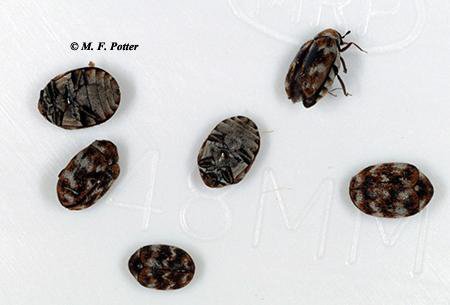Discovering tiny black bugs in your bathroom can be an unsettling experience. These pests can invade your personal space and disrupt the peace of your home. Understanding the nature of these bugs, how to identify them, and the most effective methods to eliminate them is crucial for maintaining a clean and hygienic bathroom environment.
Common Types of Tiny Black Bugs Found in Bathrooms
1. Drain Flies
Despite their name, drain flies are tiny, black insects that can often be mistaken for wingless bugs due to their small size and tendency to remain near drains. They thrive in the moist environments of bathroom drains and feed on the organic matter found there.
Characteristics:
- Size: Approximately 1.5 to 5 mm.
- Color: Dark gray to black.
- Habitat: Primarily found around drains, sinks, and showers.
2. Booklice (Psocids)
Booklice, also known as psocids, are another common bathroom invader. These tiny, wingless insects are often found in areas with high humidity and can be seen scurrying around bathroom floors, walls, and even within cupboards.
Characteristics:
- Size: Less than 1 mm.
- Color: Translucent white to grayish-black.
- Habitat: Damp and moldy areas, often near books or paper products, but also common in bathrooms.
3. Mold Mites
Mold mites are microscopic, wingless pests that feed on mold. Bathrooms provide an ideal environment for mold growth due to the high moisture levels, making them a common hotspot for these tiny bugs.
Characteristics:
- Size: Approximately 0.3 mm.
- Color: Usually white or translucent, but can appear black when in large numbers.
- Habitat: Areas with mold growth, often found in corners and crevices of bathrooms.

Identifying the Source of Infestation
Inspecting Drains and Pipes
One of the first steps in identifying the source of an infestation is to inspect your bathroom drains and pipes. Drain flies and other small insects often originate from these areas due to the buildup of organic material and moisture.
Checking for Mold and Mildew
Bathrooms are prone to mold and mildew due to their humid environment. Mold mites thrive in these conditions. Check behind toilets, under sinks, and in tile grout for signs of mold growth.
Examining Humidity Levels
High humidity levels can attract various types of insects, including booklice. Use a hygrometer to monitor the humidity in your bathroom and consider using a dehumidifier to keep levels below 50%.
Must Read=Fun and Educational | Family-Friendly Cooking Activities
https://sites.google.com/view/tiny-black-bugs-in-bathroom/home
https://medium.com/@abeeseo99/10-pro-tips-for-home-improvement-02ce25ee4f53
https://ext-6562681.livejournal.com/460.html?newpost=1
https://www.bloglovin.com/@protips/pro-tips-for-home-improvement
Effective Methods to Eliminate Tiny Black Bugs
1. Cleaning and Maintenance
Regular cleaning and maintenance are crucial for preventing and eliminating tiny black bugs in the bathroom.
- Clean Drains Regularly: Use a drain cleaner or a homemade solution of baking soda and vinegar to remove organic buildup.
- Scrub Surfaces: Thoroughly clean all bathroom surfaces, including floors, walls, and counters, to remove any food sources for pests.
- Reduce Moisture: Use exhaust fans during and after showers to reduce moisture levels and prevent mold growth.
2. Mold Removal
If you identify mold as the source of your pest problem, take immediate steps to remove it.
- Use Mold-Killing Solutions: Apply a commercial mold-killing solution or a mixture of bleach and water to affected areas.
- Fix Leaks: Repair any leaks in pipes or fixtures to prevent future mold growth.
- Improve Ventilation: Ensure your bathroom is well-ventilated to reduce humidity levels and discourage mold formation.
3. Pest Control Measures
When cleaning and mold removal are not enough, consider additional pest control measures.
- Insecticides: Use insecticides specifically designed for the pests you are dealing with. Ensure safe and proper application by following the manufacturer’s instructions.
- Professional Help: If the infestation is severe, consider hiring a professional pest control service to thoroughly eliminate the problem.
Preventing Future Infestations
Maintaining Cleanliness
Regular cleaning is key to preventing future infestations.
- Daily Cleaning: Wipe down surfaces daily to remove moisture and organic matter.
- Weekly Deep Cleaning: Perform a deep clean of your bathroom once a week, focusing on areas prone to moisture and mold.
Controlling Humidity
Keep humidity levels low to discourage pest activity.
- Use a Dehumidifier: Place a dehumidifier in your bathroom to maintain optimal humidity levels.
- Ventilation: Ensure your bathroom has proper ventilation, especially after showers.
Sealing Entry Points
Prevent bugs from entering your bathroom by sealing entry points.
- Seal Cracks and Crevices: Use caulk or weather stripping to seal any cracks or gaps in your bathroom walls, floors, and around fixtures.
- Install Mesh Screens: Install mesh screens over vents and drains to prevent bugs from entering through these openings.
Conclusion
Dealing with tiny black bugs in the bathroom with no wings can be a challenging and frustrating experience. However, by understanding the types of pests you are dealing with, identifying the source of the infestation, and implementing effective cleaning and pest control measures, you can successfully eliminate these unwelcome visitors. Regular maintenance and preventative measures are essential to keep your bathroom clean, hygienic, and free of pests in the long term.

